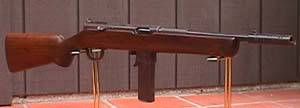MontyB
All-Blacks Supporter
sorry, you lost me there :rockin:, but I am sure going to go "Ahhhh! Of Cause!" :bang: once you enlighten us mere mortals :wink:
Rattler
Ok well since my question appears to be more cryptic than I intended it to be I will go ahead and answer it:
1) It was the movie Kolberg shot between 1943 and 1945.
2) Its connection to WW is that it was a Nazi propaganda film instigated by Goebbels at the cost of 8 Million marks making it the most expensive film of its time, it also used regular troops as extras and to ensure they had the numbers they even withdrew units from the front.
3) The premise of the movie is that citizen armies will win out over trained armies and save the day, however this is different from reality as Prussia ended up surrendering to Napoleon with the treat of Tilsit.
Anyway I just figured it would be an interesting question...
Plot
As Prussia was defeated in 1807 and subjected to a harsh peace, in order to deliver a suitable propaganda message, the film begins in 1813 after the period of the Napoleonic Wars known in German as the War of Liberation. The opening scenes show Prussian Landwehr and volunteers marching down the streets of Breslau through enthusiastic crowds. This is followed by a dialogue between the weak King Frederick William III of Prussia and Count August von Gneisenau, where Gneisenau explains that the siege of Kolberg taught the importance of citizen armies (such as Goebbels' Volkssturm). Ending with the admonition that kings who cannot lead must abdicate, the scene switches to Vienna in 1806 to show the abdication of the last Holy Roman Emperor, Francis II of Austria, whom the script has Gneisenau call "an Emperor who abandoned the German people in their hour of need".
The scene set, the film moves to 1807 and a Kolberg not yet affected by war, where the inhabitants are shown enjoying life, and the town's leaders, Nettelbeck chief among them, discuss Napoleon's proclamations, and what it will mean to them. Some see the French victories as a good thing, some wonder whether to leave. Nettelbeck alone is set on resisting the French. The film continues in this vein, with Nettelbeck struggling against cowardice, lethargy and the old-fashioned ideas of the garrison commander, to defend his city against the approaching French. Nettelbeck creates a citizen militia, in spite of the best efforts of the regular army, has supplies collected, and strongly opposes the idea of surrender.
Finally, having been threatened with execution, and convinced that Kolberg can only be saved if a great leader can be found, Nettelbeck sends Maria on the dangerous journey to Königsberg where the Court of Prussia has retreated to, to meet with the King and with Queen Louise, who was described by Napoleon as "the only man in Prussia". Maria's journey leads to the energetic and charismatic Gneisenau being sent to Kolberg. After an initial confrontation with Nettelbeck, in order show that there is only one leader in Kolberg, and that Gneisenau is that leader, the two work together with the army and the citizens to save the city from the French. After Kolberg is saved, the film returns to 1813 after the Convention of Tauroggen, a time when Napoleon was defeated in Russia, and Prussian leaders wonders whether it is time to turn openly against him. Frederick William is convinced by Gneisenau to do so, and sits down to write proclamation to his people announcing the War of Liberation.
Circumstances
Kolberg, begun in 1943, was made in Agfacolor with high production values. At a cost of more than eight million marks, it was the most expensive film of the Nazi era. At a time of war, thousands of soldiers were used in the film, some diverted from their fighting positions at substantial cost. To film scenes with snow during summer, 100 railway wagons brought salt to the set in Pomerania. The film was finally completed at the Babelsberg Studios at Potsdam while the town and nearby Berlin were being steadily bombed by the Allies. Two extras were killed during the making of the film when an explosive charge went off too early.
The film was opened in a temporary cinema in Berlin and ran under the constant threat of air raids until the fall of Berlin in May 1945; the film came far too late for the hoped-for propaganda effect. Many theatres throughout Germany were already destroyed.
After the war, also the town of Kolberg was ceded to Poland by the Potsdam Agreement, and since then has been known under the Polish name, Kołobrzeg. The German population was expelled to Germany and replaced by ethnic Polish settlers from other territories that Poland lost after the war to the Soviet Union.
The film was re-released in 1965, with an attached documentary, and is now available on digitally remastered DVD.

